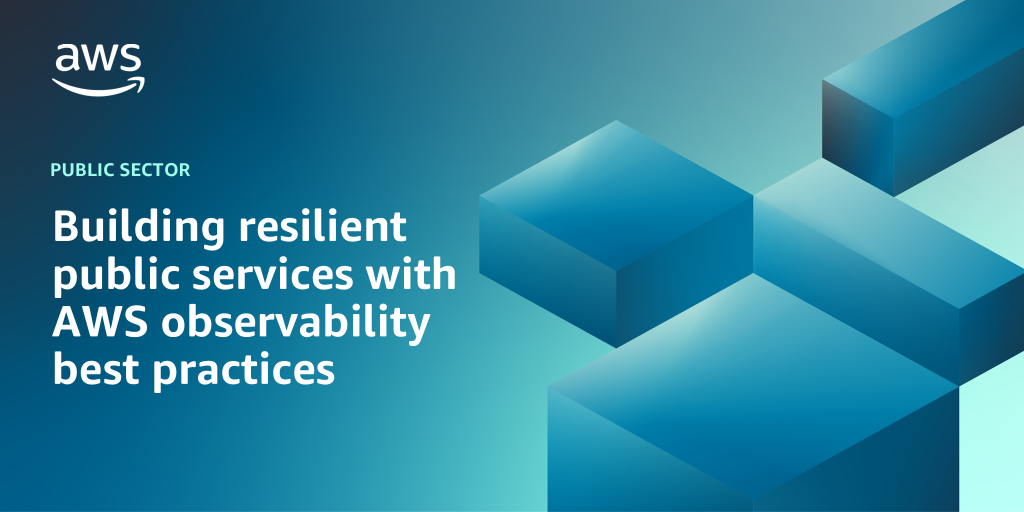AWS Public Sector Blog
Category: Developer Tools
Building resilient public services with AWS observability best practices
In this post, we introduce AWS observability services, explore best practices for observability, and explain how to achieve them.
Customizing isolated JupyterLab environments in Amazon SageMaker Studio
This post demonstrates how to enhance security and compliance in an isolated SageMaker JupyterLab environment by implementing two key customizations: configuring download restrictions and implementing secure Python package installation through AWS CodeArtifact.
Building machine learning operations framework with Amazon SageMaker: Technical Safety BC’s Journey
Technical Safety BC (TSBC) regulates the safe installation and operation of technical systems (electrical, gas, boiler, elevator, etc.) in British Columbia. This post showcases how the TSBC built a machine learning operations (MLOps) solution using AWS to streamline production model training and management to process public safety inquiries more efficiently.
Chaos engineering made clear: Generate AWS FIS experiments using natural language through Amazon Bedrock
In this post, we demonstrate how to use the generative AI capabilities of Amazon Bedrock to streamline the creation of AWS Fault Injection Service (FIS) experiments.
Integrate AI-powered coding assistance in secure environments using Continue and Amazon Bedrock
Organizations adopting modern software development activities continue to embrace the advantages of AI and large language models (LLMs), maximizing the productivity of developers. Amazon Q Developer provides you with an AI coding companion that delivers direct access for developers to the AI companion within the integrated development environment (IDE). In this post, we walk you through an example you can use leveraging the power of Amazon Bedrock to provide a coding assistant in your IDE.
AWS accelerates digital public infrastructure adoption with automation
In this post, we explore how AWS enables the automation of deploying a DPI-based solution stack. We highlight Sunbird RC (Registry and Credentials) as a real-world digital public goods (DPG) building block. The following example provides an overview and execution of the packaging available in the Sunbird community GitHub repository for provisioning required AWS services and deploying Sunbird RC services.
Self-hosting source code of the Landing Zone Accelerator on AWS
Some customers using Amazon Web Services (AWS) prohibit users from installing software from public sources. Recently, the Landing Zone Accelerator on AWS (LZA) solution added optional capabilities to support this use case. Instead of installing directly from the public LZA GitHub repository, which is the default installation path for most customers, LZA can be self-hosted from your own Amazon Simple Storage Service (Amazon S3) bucket. This post shows the technical steps necessary to install LZA using Amazon S3.
Establishing a robust cloud platform and operational model through the CCoE
This post is part three of a four-part series that addresses how a Cloud Center of Excellence (CCoE) can be a viable solution to address the challenges of digital transformation. In this post, we address the three technical perspectives of the Amazon Web Services Cloud Adoption Framework (AWS CAF). While the business, organizational, and governance perspectives of the AWS CAF are crucial, the CCoE must also focus on the technical capabilities required to build and operate a cloud environment that meets the organization’s needs.
Generating and editing AI images using Amazon Lightsail for Research
In this post, we show how Amazon Lightsail for Research can help you successfully deploy an artificial intelligence (AI) image generation model using open source software. We walk through deploying a Lightsail for Research GPU instance using a simplified console experience. We cover how to set up cost control rules in order to prevent or manage unnecessary costs. And we show how you can open network ports on your Lightsail for Research instance to allow others to access the software you are running.
Extracting insights from PubMed articles using Amazon Q Business
PubMed Central (PMC) is a leading resource for biomedical literature, offering a vast repository of full-text biomedical and life sciences journal articles. While PMC offers immense potential to accelerate scientific progress, inform evidence-based practice, and drive innovation in the biomedical and life sciences fields, the sheer volume of data presents a significant challenge. This is where Amazon Q Business comes in. It’s a powerful service designed to streamline the process of analyzing vast amounts of scientific literature and provide valuable insights efficiently. Read this post to learn more.









